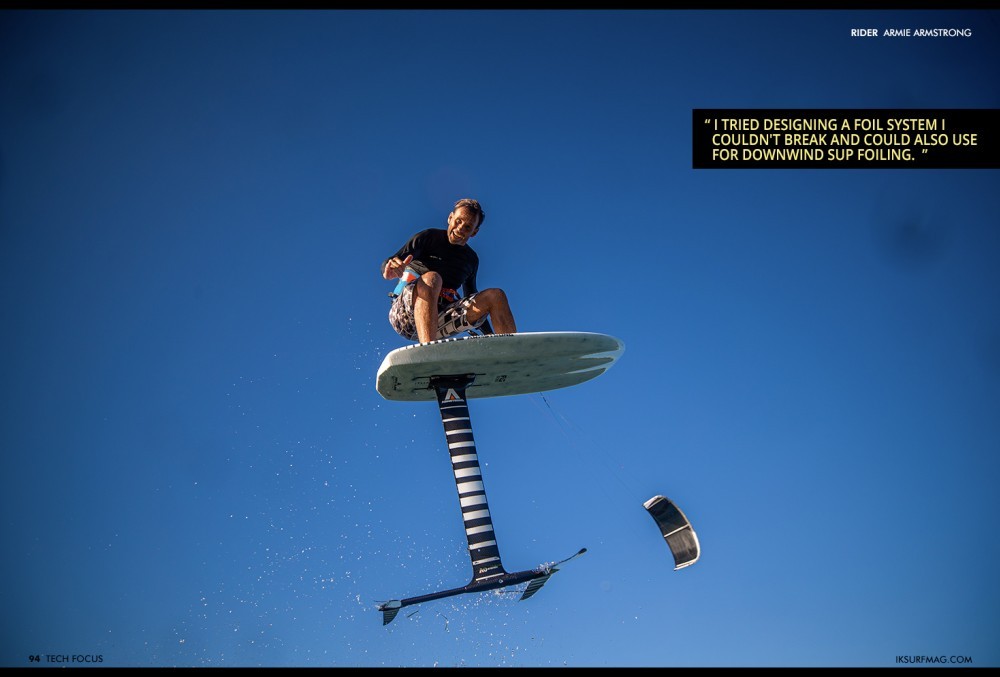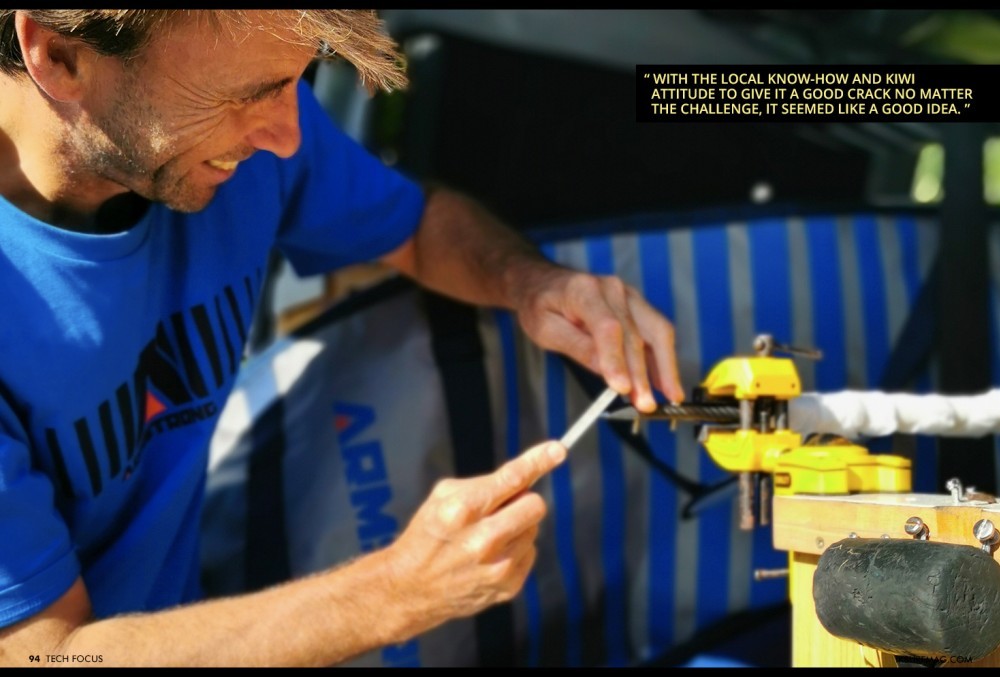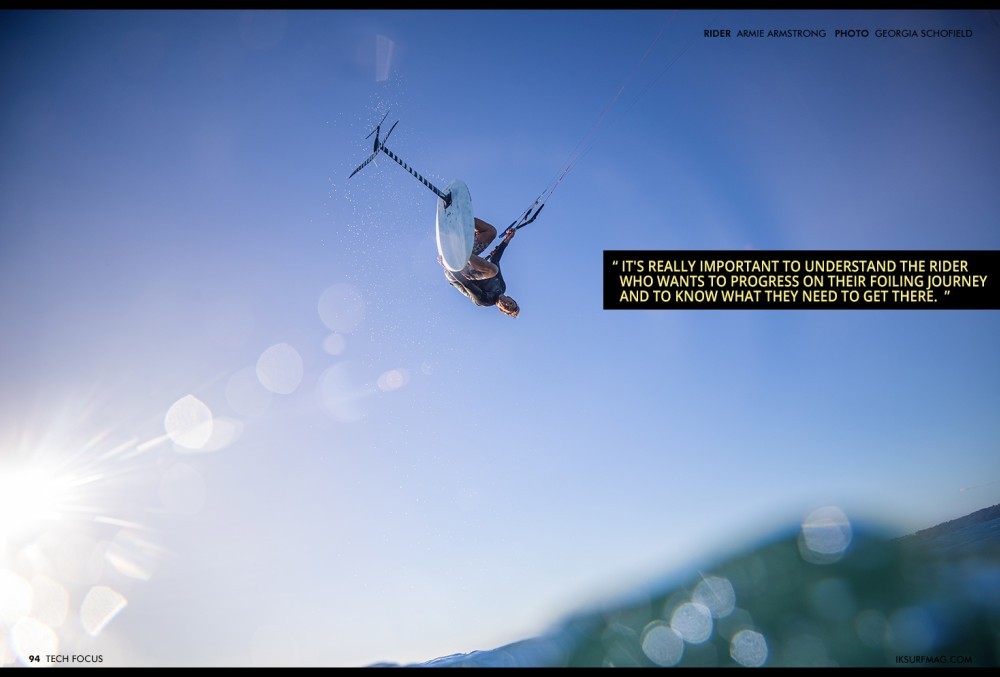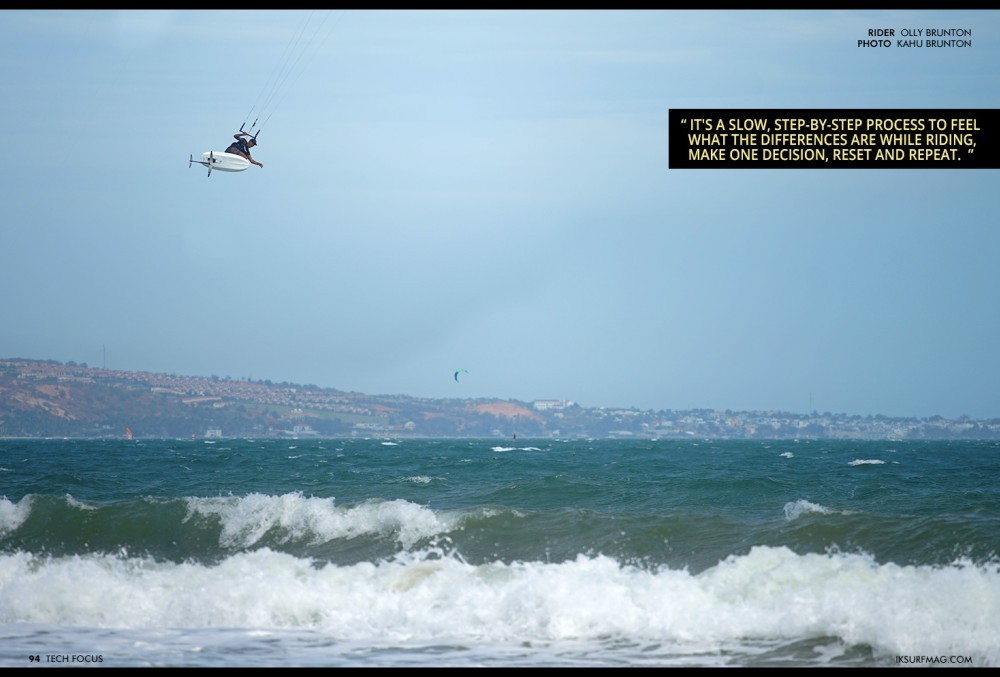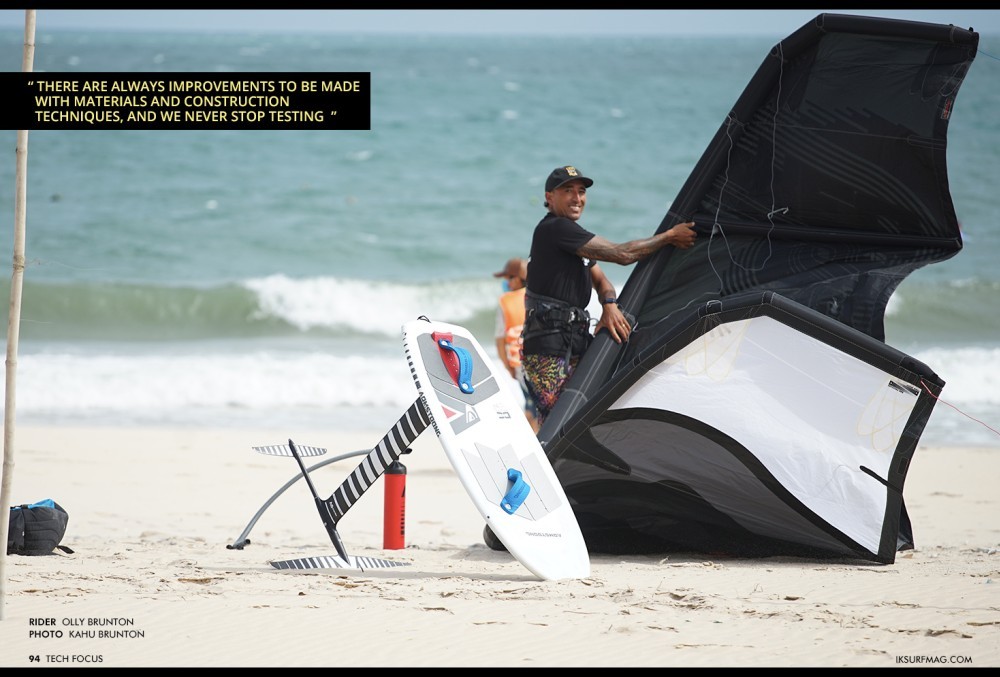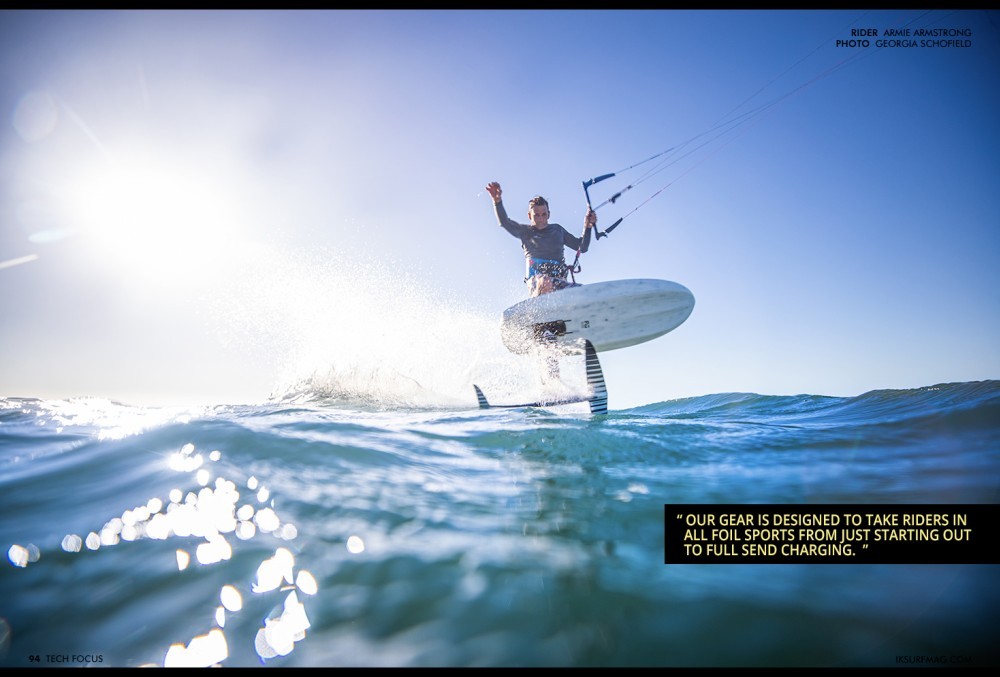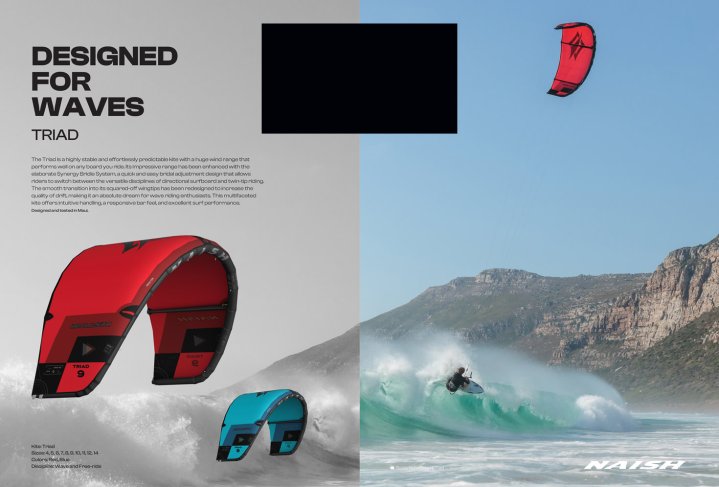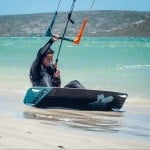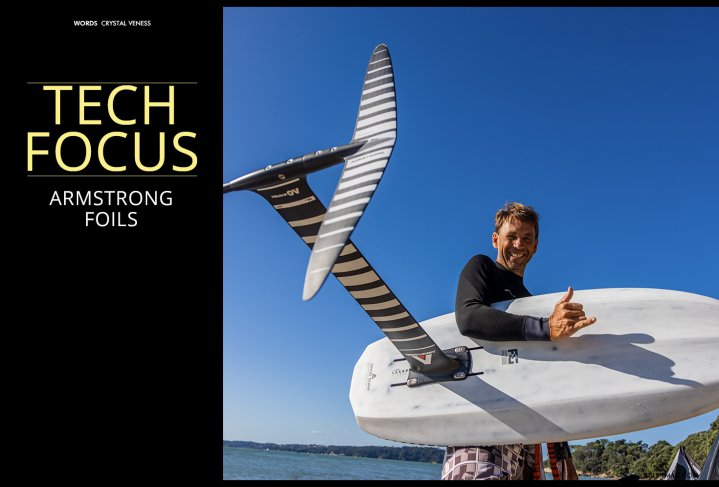
Tech Focus: Armstrong Foils
Issue 94 / Tue 9th Aug, 2022
While not the biggest brand in the industry, it’s clear that Armstrong Foils has a big reputation and a proven product. With foils that suit any and every watersport, including some designed specifically for kitesurfing, we caught up with Armie Armstrong to find out what goes into making the perfect foil. Read more in this exclusive interview!
Armie, tell us a bit about Armstrong Foils. When did it all begin, and what was the goal at the outset?
I first got into foiling with some friends in Raglan, New Zealand, about 10 years ago. We were kite foiling and trying to tow into the surf after we saw Laird charging some Raglan swell on a modified Mike Murphy sit-down foil setup with boots.
Learning in the surf, we broke most of the gear available – due to a lack of skill probably – but what seemed like bad luck at the time actually turned into the spark for Armstrong Foils! I had to keep fixing our gear and wanted bigger foils than the early kite foils we had, so I decided to make my own. After many, many failures and some successes, I tried designing a foil system I couldn't break and could also use for downwind SUP foiling.
At the time, I was a keen amateur SUP racer. In fact, I competed at the Gorge SUP race in 2016 on a self-made foil. It was the first ever foil category entry in a SUP race, much to the amusement of the SUP crew. They all thought I was completely mad, sanding my foils to reshape and improve them by the side of the river every day…
I've been involved with sailing and boats since I was a baby sailing the globe with my family on a ketch named Maya. My father is a very talented architect, so I roped him in to help draw up the male/female mast to fuselage bottom bracket concept. We based our first production designs on these early drawings and made hand-shaped foils that got cut and reshaped many times until we had something we liked.
The first full carbon rigs worked better than expected (with key help from some friends who are top NZ boat builders) when surfing on a SUP, towing a boat wake, and freestyle foil kiting at low speeds. This really was the birth of Armstrong Foils. Once I had a fully working foil and some kite and SUP foil boards, I was very lucky to get backing from Rob Whittall and two other Raglan friends of his. With this, we could attempt to get our first working foil system prepared for potential production. It was an exciting time indeed!
Do you think that being a New Zealand local, surrounded by some of the best water sports athletes in the world, inspired you to make your own mark on the industry?
For sure! I've been fortunate to have the influence and advice of many incredibly talented people in NZ, and it's no coincidence we hold the America's Cup – talent, inspiration, and hard work come in spades here! These efforts rubbed off on me, and with the local know-how and kiwi attitude to give it a good crack no matter the challenge, it seemed like a good idea. I wasn't ever trying to leave my mark, just wanting to build awesome gear.
What were you doing differently at the start that set Armstrong Foils apart from the market?
Our core goal was to make a setup that was fun to freeride, strong, and almost impossible to break – because I like to thrash gear! I also need equipment to help me feel like I can keep up with the younger rippers as time ticks on. That means using different materials and shapes.
From high-end boat building, I learned that titanium and carbon are soulmates meant to be together, literally forever, in a marine environment. They have the best strength to weight performance available. Threaded parts in titanium are simply beautiful to use, durable and offer maximum corrosion resistance. With slightly softer 316 screws, the combo is a perfect mating of form and function. This does mean the material and manufacturing costs are many times more than traditional alloy systems, but I believe the results are well worth it.
In your opinion, are there differences between hydrofoils produced by a hydrofoil company compared to hydrofoils produced by a kiteboarding company? What would these differences be?
All foils and foil systems have inherent strengths and weaknesses. I don't think they are necessarily defined by what sport they're designed for, it's more about how well thought out the design concept and physical completion are. It's really important to understand the rider who wants to progress on their foiling journey and to know what they need to get there. Conversely, it's really important for the prospective foiler to be honest with their skill level and ability and not choose a setup that's too advanced for them.
Many early kite foils were quite small with short fuselage lengths. These required fairly fast takeoff speeds that made for fast, fun foils for skilled riders, but learning became harder. Most modern foils from both kite and foil companies offer performance ranges that work well for different riders. One important difference with a more foil-focused company like Armstrong is the thoughtful development of a system where each and every part is compatible across all the foil sports. For us, that means that changing just a front foil (or maybe even just a tail shim) can take the rider on various journeys into wing, surf, SUP and wake foiling.
What goes into designing a foil that is well-suited to the kiteboarding market? How do you approach the design process?
As I mentioned, I began foiling on early kite foils. Prior to that, I got hooked on kiting in all its wonderful forms during a windsurfing trip to Maui in 1999. We've been making foils for kite foiling for almost ten years now, and have always had a kite foil in the range. That allowed us to make a lot of small developmental steps in freeride kite foils. Each one improves the ride for more people to become stoked on the foiling sensation. Our HS625 and HS850 are still awesome foils for kiting, but with our more recent foils, we spent a lot of time thinking about improving the speed range while also increasing stability.
I have always set the goal to make our foils feel like a great surfboard during that perfect bottom turn on a clean wave. It's possibly an endless pursuit, but fun and rewarding to try! This means our new, smaller foils are suitable for freeriding and freestyle kite foiling, all while being more forgiving for progressing riders. Rippers also love pushing them in waves.
When it comes to testing prototypes, how does this work? Do you get it out on the water, or is it tested in a workshop or factory setting?
We do a ton of technical testing for stiffness, loaded twist, and strength on various test machines, but all the shaping decisions are made on the water riding the foils. It's what I love doing! I will literally go insane if I'm not on the water almost daily. Every time I'm on the water, there is something different to test, so basically, it's a slow, step-by-step process to feel what the differences are while riding, make one decision, reset and repeat. If I had a dollar for every foil screw I've tightened!
I've heard some great things about the stiffness of Armstrong masts. How do you achieve this winning combo of lightness and stiffness?
We were really lucky to have key input from top America's Cup boat builders on our mast core structure and layup. We've achieved what we believe to be the optimal balance between strength, weight, and flex, and we're able to put the flex specifically where we want it. We always use the best intermediate modulus and high modulus carbon fibres available in all our foils. The mast top above the waterline does indeed need to be very solid. Our tapered shapes combined with our unique mast top hardware achieve this, but we firmly believe that the lower part of the mast needs to have reactive flex. It makes the foil feel more reactive when driving into bottom turns and helps with timing into oncoming wave sections. For a strict race foil, it may be that stiffer is better, but that's not the case for freeride foils where reactive flex of well-oriented fibres aids stability in turbulence and whitewater. There are always improvements to be made with materials and construction techniques, and we never stop testing and developing our constructions every day.
Which Armstrong foil do you think is best suited to kite-foiling, and why?
It depends entirely on the rider's skill level and the conditions as to what foil will be best. Currently, the HA525, HS625, HS850, CF950, and HS1050 generally cover small, medium, and large riders. For kiting, these foils could be set up with either our 100cm or 85cm masts, the TC60 or TC50 fuselages, and the HA195 or HS232 stabilisers. Generally, the bigger HS1050 and CF950 are great foils for light wind riding or learning, the HS850 suits smaller beginner or intermediate foilers, and the HS625 and HA525 are for rippers wanting to supercharge their freeride sessions. The 625 and 850 are best suited to waves, while the 525 loves flatter water or bump riding sessions.
Armstrong does produce a line of foil boards, but are Armstrong hydrofoils compatible with kite foil boards from other brands?
Yes, our foils can be put on most third-party kite foil boards. We generally recommend placing our masts toward the front of the foil board tracks. The Armstrong custom carbon A+ System foil tracks are much longer than most, and our foils are designed to perform best further forward.
Foiling can become a costly hobby, especially as riders progress, change location and conditions, or even start to look for foils that can work on kites, wings, and in surfing. How have you future-proofed Armstrong foils to make the changing needs, and changing quiver, of your customers as pain-free as possible?
All our components are modular and interchangeable, and our gear is designed to take riders in all foil sports from just starting out to full send charging. This means that less gear can do the job, and it will last longer so that you don't need to buy all new gear to progress. Personally, I do it all on an 85cm mast, TC60 fuselage, and the HA195 stabiliser. Depending on what I want, I just swap out the front foil.
Lastly, which is your go-to setup for a kite foil session?!
That depends on wind and water conditions, but it's always either the HA525 in flatter water or HS625/CF950 in waves. I pair these with an 85cm mast, TC50 fuselage, and HA195 stabiliser with none or half a degree of shim.
Thanks so much for taking the time, Armie!
Thank you for driving the stoke!
By Crystal Veness
Editor at IKSURFMAG, Crystal Veness hails from Canada but is based in South Africa. When she isn't busy kitesurfing or reporting on the latest industry news for the mag, she is kicking back somewhere at a windy kite beach or working on creative media projects.




